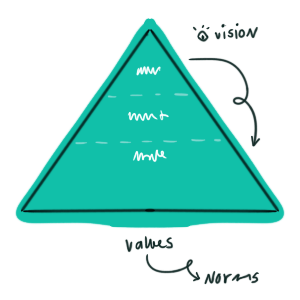
Empathy map
The popular empathy map tool is a collaborative and visual way to illustrate what users think, feel, say, and do. This tool externalizes the knowledge about users in order to create a shared understanding of their needs and provides information to help decision-makers.
The Empathy map session will provide a glance into who a user is and their perspective.
- The “Says” quadrant will capture what the user says out loud in an interview, on social media or elsewhere.
- The “Thinks” quadrant captures what the user thinks but maybe don’t want to say. This quadrant should be closely analyzed with the “Does” quadrant. Ask yourself: What matters to the user? What do they worry about?
- The “Does” quadrant captures their actions.
- The “Feels” quadrant captures the user’s emotional state: What is the user excited about? How does the user feel about the experience? What do they fear? You will be describing emotions and how these emotions affect their decisions.
STEP 1: Define your customer / persona
Make sure you have a persona in mind before starting this exercise. If you don’t yet have one, create one using our “Personas” tool, or have a pre-defined persona in mind. You may add a link to the persona on the board.
Before proceeding, you should know basic information about the target: such as Age, Sex, Lifestyle, Hobbies, Status, Education, Location, Interests, Groups, etc.
STEP 2: Find information about your customer / persona
Start by finding information online (the easiest way to gather data quickly). Write down a number of places where your customers may hang out online, and make sure your team searches for recent data.
Excellent places to search are online forums, Facebook groups, comment sections of popular blog posts, etc.
STEP 3: Define your customer / persona
An empathy map is an easy and visual matrix that captures knowledge about a user’s behaviors and attitudes. It is a useful tool to help teams better understand their users.
- What does she/he SEE? What is she/he finding in her/his daily routine? What is she/he experiencing? Maybe people, activities, or things.
- What does she/he DO and SAY? What are her/his behaviors?
- What does she HEAR? What is the user hearing and how is it influencing her/him?


